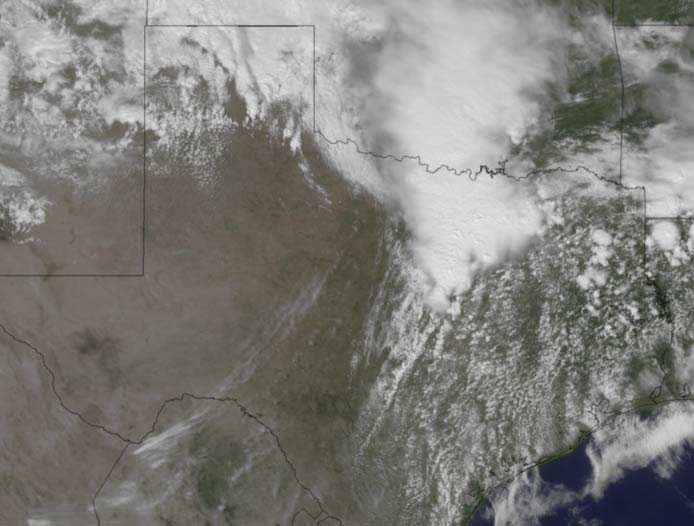Devastating Texas Tornadoes Seen by Satellite

Tornadoes tore through northeast Texas yesterday (April 3), in an outbreak of severe weather that was captured by a fleet of satellites designed to monitor the situation from space.
At least six tornadoes were reported in the Dallas-Fort Worth area from mid-afternoon to early evening on April 3, according to officials at the National Weather Service.
This image, taken by the GOES-13 (or GOES-East) satellite, shows thick clouds blanketing the Dallas metropolitan area just after 2 p.m. local time yesterday.
"Severe thunderstorms containing very large hail, damaging winds and frequent cloud to ground lightning are continuing across the eastern two-thirds of north Texas," the National Weather Service alerted at the time. "Strong tornadoes are possible with discrete supercell thunderstorms that occur out ahead of the main line of the storms."
The Texas tornadoes left a trail of heavy damage, but no fatalities were immediately reported. Still, at least 15 people are known to be injured, according to news reports.
Large hailstones from the storm also wreaked havoc, and hundreds of flights to and from the Dallas-Fort Worth International Airport were rerouted or canceled. In some areas, hailstones reportedly measured more than 2 inches (5 centimeters) wide.
The last time the Dallas metropolitan area was hit by strong tornadoes was in 2000, according to meteorologists.
Get the Space.com Newsletter
Breaking space news, the latest updates on rocket launches, skywatching events and more!
The National Weather Service uses the GOES satellites to study weather patterns and the climate. The GOES system (short for Geostationary Satellite system) is made up of four Earth-watching observatories that help with storm tracking and weather forecasting.
This story was provided by OurAmazingPlanet, sister site to SPACE.com. Follow OurAmazingPlanet for the latest in Earth science and exploration news on Twitter @OAPlanet and on Facebook.
Join our Space Forums to keep talking space on the latest missions, night sky and more! And if you have a news tip, correction or comment, let us know at: community@space.com.
For the science geek in everyone, Live Science breaks down the stories behind the most interesting news and photos on the Internet, while also digging up fascinating discoveries that hit on a broad range of fields, from dinosaurs and archaeology to wacky physics and astronomy to health and human behavior. If you want to learn something interesting every day, Live Science is the place for you.










